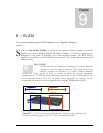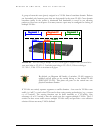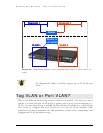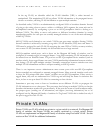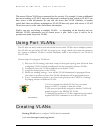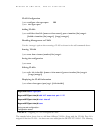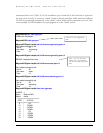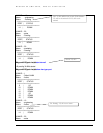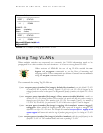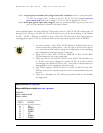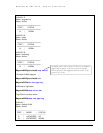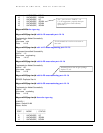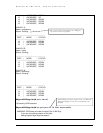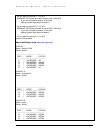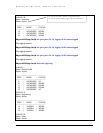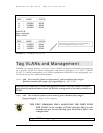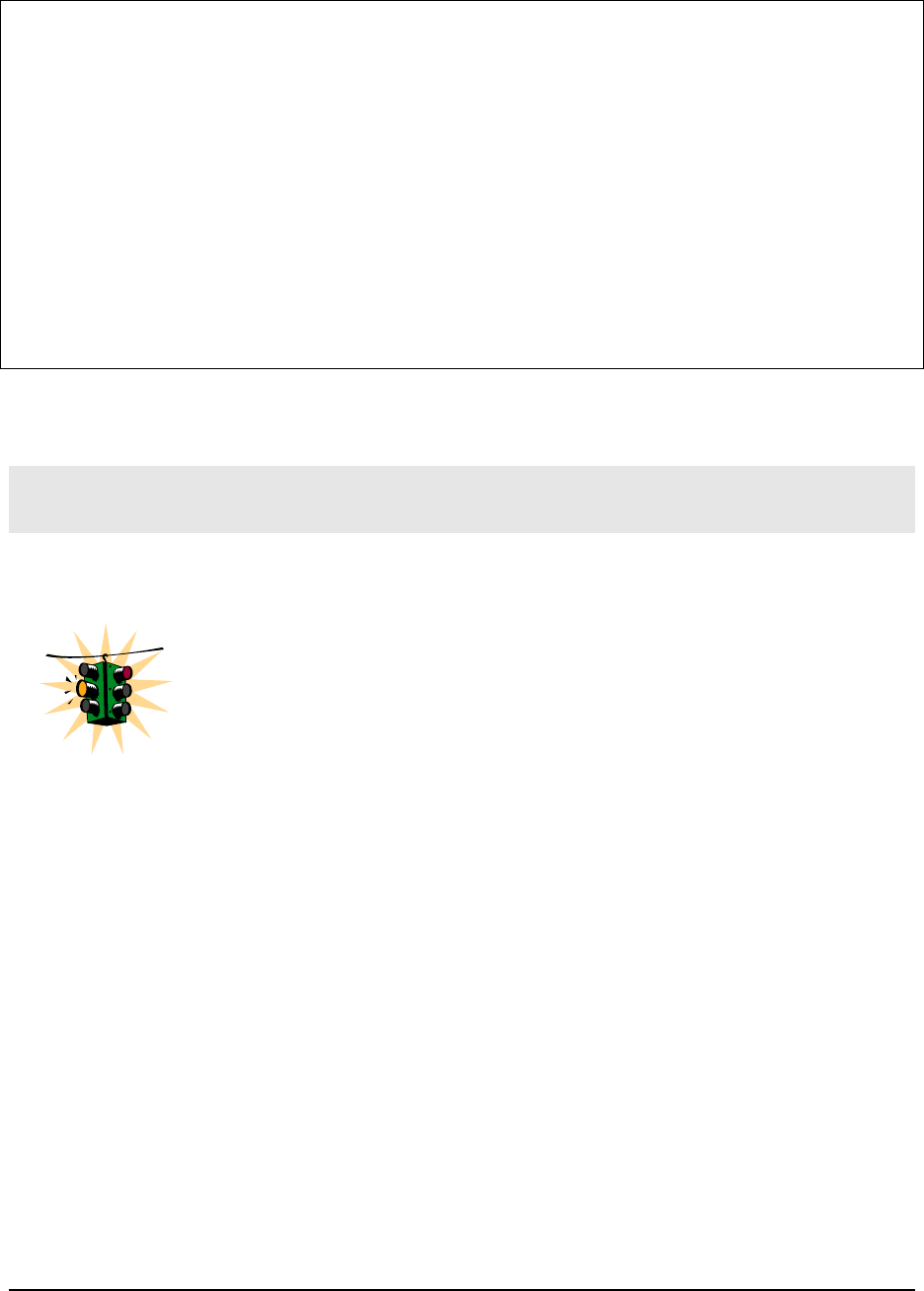
MAGNUM 6K SWITCHES, MNS-6K USER GUIDE
Status : Active
========================
PORT | STATUS
========================
14 | DOWN
VLAN ID : 30
Name : marketing
Status : Active
========================
PORT | STATUS
========================
14 | DOWN
Magnum6K25(port-vlan)## exit
Magnum6K25#
FIGURE 71 – Example of setting up port based VLANs
Using Tag VLANs
When multiple switches are connected on a network, the VLAN information needs to be
propagated on to other switches. In such situations – it is best to use tag based VLANs.
Older versions of MNS-6K the use of tag VLANs needed the set-
ingress and set-egress commands to set the flow of incoming and
outgoing traffic. These commands are defunct. GarrettCom recommends
using the set-port command instead.
The commands for setting Tag VLANs are
Syntax set-port port=<number|list|range> default id=<number> sets the default VLAN
id (termed PVID in previous versions). Default VLAN id is the VLAN id assigned to the
untagged packets received on that port. For Magnum 6K family of switches, the default VLAN id
is 1
Syntax set-port port=<number|list|range> filter status=<enable|disable> enables or
disables the VLAN filtering function. When enabled, the switch will drop the packets coming in
through a port if the port is not a member of the VLAN. For example, if port 1 is a member of
VLANs 10, 20 and 30, if a packet with VLAN id 40 arrives at port 1 it will be dropped
Syntax set-port port=<number|list|range> tagging id=<number> status=<tagged|
untagged> defines whether the outgoing packets from a port will be tagged or untagged. This
definition is on a per VLAN basis. For example the command
set-port port=1 tagging id=10
status=tagged
will instruct the switch to tag all packets going out of port 1 to belong to VLAN
10
Syntax set-port port=<number|list|range> join id=<number> adds the specified port(s) to the
specified VLAN id. This command works with active or pending VLANs
111



